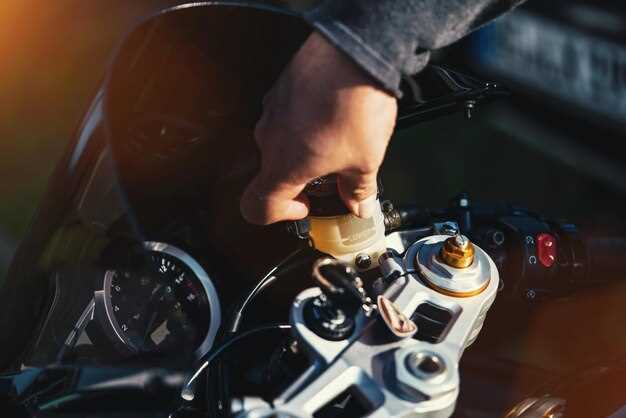
Maintaining your ATV is crucial for ensuring its longevity and performance, and one of the most important aspects of this maintenance is regularly checking the various fluids. Fluids play a vital role in keeping your quad bike running smoothly, preventing potential damage, and ensuring safety during rides. By paying attention to these essential fluids, you can avoid costly repairs and enhance your riding experience.
Each fluid in your ATV serves a specific purpose, from lubricating engine components to cooling the system and ensuring optimal braking performance. Neglecting to monitor these fluids can lead to decreased efficiency and might even result in mechanical failures. Therefore, it is imperative to familiarize yourself with the key fluids that require regular checks and maintenance.
In this article, we will delve into the critical fluids you need to inspect for your quad bike maintenance. By understanding the significance of each fluid–from engine oil and coolant to brake and transmission fluids–you can take proactive steps to keep your ATV in peak condition, ready to tackle any terrain.
Checking Engine Oil: Importance and Frequency

Engine oil is a crucial fluid in the maintenance of your quad bike. It lubricates the engine components, reducing friction and wear, which in turn prolongs the life of the engine. Neglecting to check and maintain proper oil levels can lead to serious engine problems, decreased performance, and costly repairs. Consequently, regular checks of your engine oil are essential for optimal performance and reliability.
The frequency of checking engine oil depends on several factors, including the type of quad bike, usage conditions, and the type of oil used. As a general rule, it is advisable to inspect the engine oil at least once a month and before any long rides. For those who frequently ride in harsh conditions or use the quad bike for heavy-duty tasks, more frequent checks may be necessary.
To check engine oil, start by ensuring the quad bike is on level ground. Remove the dipstick, wipe it clean, and then reinsert it to get an accurate reading of the oil level. If the oil appears dark or gritty, it may be time for an oil change. Regular oil changes, aligned with the manufacturer’s recommendations, will help maintain engine efficiency and prevent potential issues.
Verifying Coolant Levels: Maintaining Optimal Engine Temperature
Regular maintenance of your ATV involves checking various fluids to ensure optimal performance, and coolant is one of the most critical. The coolant fluid plays a vital role in regulating the engine temperature, preventing overheating, and protecting against corrosion. Thus, verifying coolant levels should be a routine part of your quad bike upkeep.
To begin with, always consult your owner’s manual for the specific type and mix ratio of coolant recommended for your model. A proper coolant mix is essential for effective heat dissipation and preventing freeze damage in colder climates. Begin the verification process by locating the coolant reservoir or radiator; it’s important to check both when performing your fluid inspection.
With the engine cold, check the coolant reservoir’s level. There should be a marked “full” line indicating the optimal fluid level. If it’s below this line, a top-up is necessary. However, be cautious–never open the radiator cap or reservoir when the engine is hot to avoid burns from steam or hot fluid.
When adding coolant, mix it according to the manufacturer’s guidelines and pour it gently into the reservoir. After filling, it’s wise to run the engine for a few minutes to allow the new fluid to circulate throughout the system. This will also help you identify any potential leaks if the levels drop quickly afterward.
Additionally, periodically inspect the coolant for any signs of contamination or discoloration. Cloudy or rust-colored fluid can indicate issues within the cooling system that may require more in-depth diagnosis. Maintaining adequate coolant levels and quality is essential for the longevity of your ATV’s engine, ensuring that it operates within the optimal temperature range during rides.
Inspecting Brake Fluid: Ensuring Safe Stopping Power

Brake fluid is a critical component of your ATV’s braking system, playing a vital role in ensuring your safety while riding. Regular maintenance of the brake fluid is necessary to maintain optimal stopping power and prevent brake failure. Over time, brake fluid can absorb moisture and become contaminated, leading to decreased performance and potential damage to the braking system.
To inspect the brake fluid, start by locating the brake fluid reservoir, usually found near the handlebars or at the rear master cylinder. Check the fluid level against the marked indicators on the reservoir. If the level is low, top it up with the recommended fluid type specified in your ATV’s owner’s manual.
Next, examine the condition of the fluid. Healthy brake fluid should appear clear or slightly yellow. If you notice a dark, murky appearance or any signs of foaming, it’s time for a fluid change. Contaminated fluid can lead to corrosion in the brake lines and reduce braking efficiency.
Additionally, consider the fluid’s moisture content. Brake fluid is hygroscopic, meaning it absorbs moisture from the environment over time, which can lower its boiling point and lead to vapor lock. Using a brake fluid tester can help determine the moisture level, guiding you on whether it’s time for replacement.
Regularly inspecting and maintaining the brake fluid will ensure that your ATV performs effectively, providing the safe stopping power necessary for an enjoyable riding experience. Prioritizing this maintenance task helps prevent costly repairs and enhances your overall safety on the trails.





